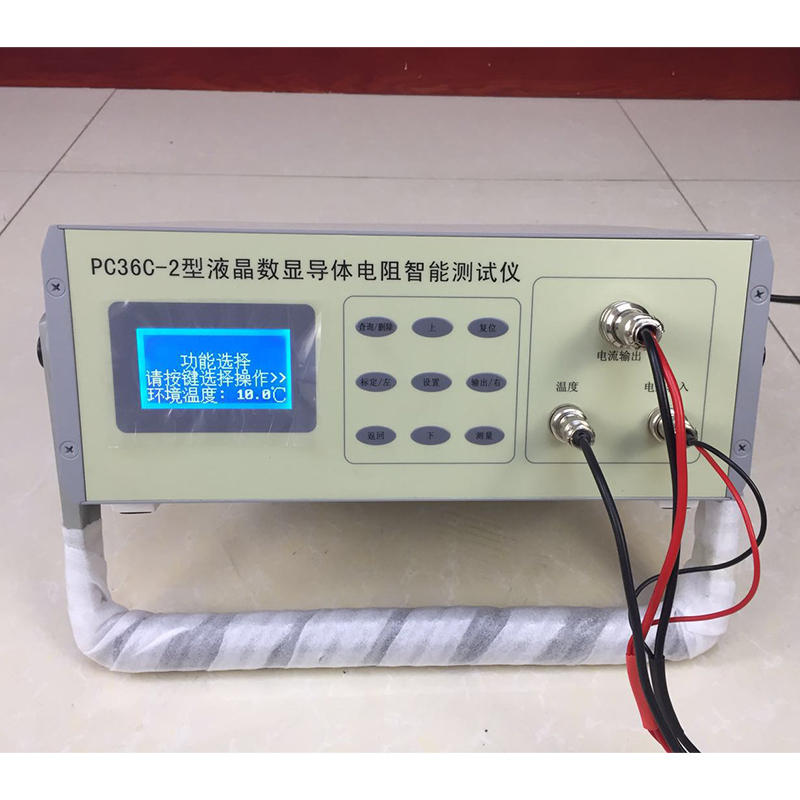Manufacturer of Manual Tensile Testing Machines for Accurate Material Testing Solutions
Understanding the Manual Tensile Tester Machine A Manufacturer's Perspective
Tensile testing is an essential process in material science, allowing engineers and manufacturers to assess material properties such as tensile strength, elongation, and yield strength. Among the various types of tensile testing equipment, the manual tensile tester machine stands out for its simplicity, affordability, and efficacy, making it a popular choice for small laboratories and educational institutions. This article explores the key features, benefits, and considerations of manual tensile tester machines from a manufacturer’s standpoint.
What is a Manual Tensile Tester Machine?
A manual tensile tester machine is a device used to measure the tensile properties of various materials by applying a uniaxial force. The machine typically consists of a frame with a loading mechanism, grips to hold the specimen, and a measuring system to record the applied force and corresponding elongation. Unlike automated systems, manual testers require an operator to conduct the testing process, which includes applying the load, observing the specimen's behavior, and recording the results.
Key Features of Manual Tensile Testers
1. Cost-Effectiveness One of the primary advantages of a manual tensile tester is its affordability. For small businesses or educational institutions with limited budgets, investing in a manual machine allows for effective material testing without the financial burden associated with complex automated systems.
2. Simplicity Manual testers are generally straightforward to operate. Most models only require basic training, making them accessible for operators of varying skill levels. Their user-friendly designs enable quick setup and adjustment of the testing parameters.
3. Portability Many manual tensile testers are lightweight and compact, making them easy to transport and store. This feature is particularly beneficial for labs that may need to conduct tests at different locations or have limited space.
4. Versatility Manual tensile testers can accommodate a wide range of materials, including metals, plastics, textiles, and composites. By using interchangeable grips and extensions, these machines can test specimens of different shapes and sizes, offering great flexibility for diverse applications.
5. Minimal Maintenance Compared to more complex automated systems, manual testers require less upkeep. With fewer mechanical components subject to wear and tear, manufacturers can provide durability and longevity in their products.
Benefits of Manual Tensile Testers for Users
manual tensile tester machine manufacturer

The most significant benefit of using a manual tensile tester lies in its ability to provide accurate and reliable data on material properties. Such information is crucial for quality control, research and development, and compliance with industry standards.
- Enhanced Understanding of Material Behavior By manually conducting tests, users can develop a deeper understanding of the materials they evaluate
. The hands-on experience allows operators to observe the failure modes and deformation patterns, fostering insight into material performance.- Immediate Data Analysis With the manual approach, users can quickly analyze and interpret results on-site, facilitating informed decision-making. This immediacy can be particularly advantageous for rapid prototyping or iterative design processes.
- Training Opportunities Given their simplicity, manual tensile testers serve as excellent training tools for students and new engineers, helping them grasp fundamental concepts of material testing and mechanics.
Considerations for Manufacturers
While the manual tensile tester offers numerous advantages, manufacturers must consider certain factors when designing and producing these machines
- Precision and Accuracy Engineers must ensure that manual systems provide precise measurements to maintain credibility in testing results. Calibration mechanisms and high-quality components are essential for ensuring accuracy.
- User Safety Safety features must be incorporated to protect operators during testing. This includes stable construction, fail-safes, and clear instructions to minimize risks associated with handling test specimens.
- Adaptability As material science advances, manufacturers should focus on creating modular designs that allow for upgrades or additional attachments to test emerging materials effectively.
Conclusion
The manual tensile tester machine remains a vital tool in the toolbox of engineers and researchers alike. By understanding the features and benefits of these devices from a manufacturer's perspective, stakeholders can make informed decisions that enhance material testing practices. As technology evolves, the importance of reliable and accessible testing equipment will continue to grow, affirming the role of manual tensile testers in the field of material science.
-
Why the Conductor Resistance Constant Temperature Measurement Machine Redefines Precision
NewsJun.20,2025
-
Reliable Testing Starts Here: Why the High Insulation Resistance Measuring Instrument Is a Must-Have
NewsJun.20,2025
-
Flexible Cable Flexing Test Equipment: The Precision Standard for Cable Durability and Performance Testing
NewsJun.20,2025
-
Digital Measurement Projector: Precision Visualization for Modern Manufacturing
NewsJun.20,2025
-
Computer Control Electronic Tensile Tester: Precision and Power for the Modern Metal Industry
NewsJun.20,2025
-
Cable Spark Tester: Your Ultimate Insulation Assurance for Wire and Cable Testing
NewsJun.20,2025
 Copyright © 2025 Hebei Fangyuan Instrument & Equipment Co.,Ltd. All Rights Reserved. Sitemap | Privacy Policy
Copyright © 2025 Hebei Fangyuan Instrument & Equipment Co.,Ltd. All Rights Reserved. Sitemap | Privacy Policy
